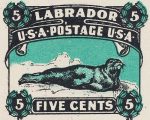The spring I turned 11 my father Lawrence had such a good seal hunt he had money to buy all the children new bicycles. We lived on a tiny island called Indian Cove, population 40. I don’t remember being poor. We had a warm comfy home and lots to eat – cod and salmon, terns and eider duck. But a new bicycle was an expense and a luxury.
I recall the bikes arrived on the coastal boat, four of them for my two brothers and sister and me, bought with the extra money Dad had made from selling the seal pelts. I reflect on those years with a sense of passage. My father died in 2011 of cardiac arrest; he was 68. The seal processing plants have closed in my district. My mother has sewn sealskin till her fingers were sore, crafting mittens and slippers and jewelry, and can make almost anything from the pelts. If you see me in the House of Commons with sealskin cuffs on my jacket, you will know my mother made those.
I loved the seal hunt in those years. My brothers still go to the ice in the spring, as they had with my father. It was a community event for the men of Indian Cove to gather for the all-day hunt. It was exciting!
They hauled their boats by snowmobile to the edge of the water, often in bitter cold. Even in March it was -20° with the wind off the ice. Only the sons accompanied their fathers; my sister and I stayed home.
On a good day Dad could bring in eight seals. First they were skinned, and the pelt was cured. Then the meat was divided with portions set aside for neighbours who could not join in the hunt. As children we waited all year for the first meal of seal – finally, some good fresh meat again.
The hunt was an opportunity to share with Dad the work he did his whole life, and understand how important sealing was to the men of Indian Cove. They were deeply connected to the land and water. Years afterward, as a researcher conducting oral histories for Memorial University, I returned to interview the people of the district and the town of Mary’s Harbour, where we’d moved when I was 12. I loved the region and its culture.
Mary’s Harbour is a town of 500. The nearest hospital was a day’s travel away in Newfoundland, across the Strait of Belle Isle. My graduating class had 11 students. We never had cable television. When I went away to college in Stephenville my friends would laugh because I did not know how to use a TV remote. I could shoot a rifle and set up a Labrador tent, but could not work the remote.
Today I live “away” again, and my husband works in the mines so he lives “away”, and we fly back and forth, but Labrador remains my home.
We continue to hunt seal. I can’t determine how other Canadians reflect on this, but make no apologies for the fact. It is part of who we are.
(Editor’s note: the author is Liberal MP for Labrador and Parliamentary Secretary for Northern Affairs).






